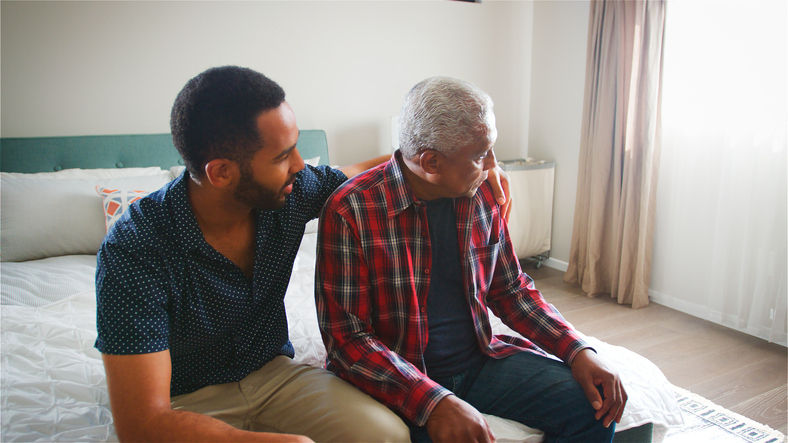Exercising the Right to Vote
- Elder Care Law Blogger
- Jun 26, 2016
- 4 min read
Updated: Oct 6, 2022

On Tuesday, November 8, 2016, U.S. citizens will vote to determine the direction of our country in what is likely to be a historic election. The right to vote is one of those rights that an American citizen never loses, even if he or she resides in a long-term care facility. Unfortunately, many older people who are receiving care at nursing homes or assisted living communities aren’t always able to exercise that right. They may be intimidated by the thought of getting to the polls and potentially waiting in long lines. Some might even wonder whether, as long-term care residents, they’re still allowed to vote.
Old age and physical frailty don’t have to be barriers to the voting process. How do nursing homes and assisted living communities help to make sure their residents are able to exercise their right to vote? What can family members do to ensure that elderly loved ones living in long-term care facilities have the opportunity to exercise this important right?
Throughout the United States, residents of long-term care facilities have the right to vote. Many states (including Tennessee) have instituted accommodations for elderly voters unable to get to the polls. Even if mental or physical limitations make it difficult for residents of long-term care facilities to appear in person at a voting location, they can still cast their ballots. Thirty-two states have statutes that specifically address voting by residents of nursing homes or long-term care facilities. Mobile polling, also known as supervised absentee voting, is the most common form of assistance, permitted by statute in 23 states. These efforts are conducted in the residential facility, by a bipartisan team of workers trained by local election officials. Some states determine where mobile polling will be offered based on the number of people who have requested absentee ballots, and others on the number of registered voters in residence.
Elder Care Coordinator Pati Bedwell spent several years as an activities director at a nursing home in Kentucky and has experience helping residents exercise their right to vote. “A member of the activities staff and I spoke directly with each resident to see who wanted to vote,” said Pati. “We then contacted the local Election Commission and requested absentee ballots. If residents needed help completing the absentee ballots, staff members would assist. We would then return those ballots to the Election Commission.”
A long-term care facility in Gallatin also takes steps to ensure that residents who wish to vote have the opportunity to do so. “At the start of every election cycle, we receive a notice from the Election Commission requesting a list of residents who want to participate in the upcoming election,” said Jennifer Hudson, a social worker at the facility. “The activities director talks with residents to determine who wants to vote, and that list of residents is returned to the voter registration office. A few weeks before election day, a representative from that office comes to the facility to assist the designated residents with their individual votes. Since election procedures differ from county to county and state to state, a call to your county’s Election Commission will provide specific directions for the way voting is handled in your city and county.”
At another long-term care facility in Clarksville, residents cast their votes during the early voting period preceding each election. The Election Commission contacts their facility and lets them know when a representative will be coming to the facility to facilitate the onsite voting process. The facility has a list of residents wishing to vote ready for the Election Commission representatives when they arrive. A private area is set up and election officers come to the facility and offer one-one-one assistance to residents.
When it comes to making voting easy and convenient for residents, follow-through is critical. “It is important that the facility know which residents want to vote so they can get the absentee ballots to them in a timely manner,” said Pati, who cautioned that every long-term care facility handles the process differently. “Some facilities make an extra effort to get out the vote and others do very little to help residents exercise this important right. Many times it falls to the family or the resident to make those wishes known and request help.”
If your loved one is in a long-term care facility, ask about the ways the facility supports residents’ right to vote. The most proactive facilities typically do the following:
Help residents register to vote
Help residents get absentee ballots or coordinate onsite voting during the early voting period
Host debate watching events
Host political discussions
Provide transportation to the polls
Provide information on upcoming elections and candidates
Distribute sample ballots to familiarize residents with voting procedures
Post reminders about registration deadlines
We applaud all these efforts and believe it’s vitally important that every citizen have the opportunity to make their voice heard. If you are concerned that a loved one who lives in a long-term care setting may not be able to exercise his or her constitutional right to vote, contact your local Long-term Care Ombudsman at www.ltcombudsman.org/ombudsman for assistance.
For information about polling locations and other election-related matters where you live, visit the USA.gov voting page.~







Comments